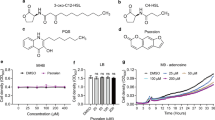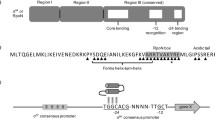Abstract
Pseudomonas aeruginosa is an ambidextrous Gram-negative contagium with density convoluted network defined quorum sensing, which enables the persistent survival within the host environment, contributing to various lung related diseases including Chronic Obstructive Pulmonary Disease (COPD). It is clear that P. aeruginosa is a powerful, exquisite pathogen that has adopted a variety of virulence properties through quorum sensing (QS) regulated phenomenon and that it dominates both in the development and exacerbations of COPD. Interestingly, 7-Ethoxycoumarin (7-EC), a compound that adequately mimics QS signaling molecule of P. aeruginosa, was introduced as part of the process of developing novel ways to treat the severe exacerbations. The results showed that, introduction of 7-EC significantly decreased exopolysaccharide-mediated biofilm development of strains isolated from COPD sputum, as evidenced by SEM analysis. Furthermore, 7-EC was able to modulate a variety of virulence factors and motility without subjecting planktonic cells to any selection pressure. Bacterial invasion assay revealed the potential activity of the 7-EC in preventing the active entry to A549 cells without causing any damage to the cells and found functionally active in protecting the C. elegans from P. aeruginosa infection and being non-toxic to the worms. Docking analysis was further proved that 7-EC to be the potential anti-QS compound competing specifically with Rhl and Pqs Systems. Therefore, 7-EC in the utilisation against the P. aeruginosa based infections, may open an avenue for the futuristic mechanistic study in chronic respiratory diseases and a initiator for the development of non-antibiotic based antibacterial therapy.









Similar content being viewed by others
References
Abraham I, Packiavathy SV, Palani A et al (2011) Antiquorum sensing and antibiofilm potential of Capparis spinosa. Arch Med Res 42:658–668. https://doi.org/10.1016/j.arcmed.2011.12.002
Adonizio A, Kong K-F, Mathee K (2008) Inhibition of quorum sensing-controlled virulence factor production in pseudomonas aeruginosa by south florida plant extracts. Antimicrob Agents Chemother 52:198–203. https://doi.org/10.1128/AAC.00612-07
Alonso B, Fernández-Barat L, Di Domenico EG et al (2020) Characterization of the virulence of Pseudomonas aeruginosa strains causing ventilator-associated pneumonia. BMC Infect Dis 20:909. https://doi.org/10.1186/s12879-020-05534-1
Bajire SK, Jain S, Johnson RP, Shastry RP (2021) 6-Methylcoumarin attenuates quorum sensing and biofilm formation in Pseudomonas aeruginosa PAO1 and its applications on solid surface coatings with polyurethane. Appl Microbiol Biotechnol. https://doi.org/10.1007/s00253-021-11637-9
Basso P, Ragno M, Elsen S, et al (2017) Pseudomonas aeruginosa pore-forming exolysin and type IV Pili cooperate to induce host cell lysis. mBio 8:e02250-16. https://doi.org/10.1128/mBio.02250-16
Braud A, Hannauer M, Mislin GLA, Schalk IJ (2009) The Pseudomonas aeruginosa pyochelin-iron uptake pathway and its metal specificity. J Bacteriol 191:3517–3525. https://doi.org/10.1128/JB.00010-09
Cady NC, McKean KA, Behnke J, et al (2012) Inhibition of biofilm formation, quorum sensing and infection in Pseudomonas aeruginosa by natural products-inspired organosulfur compounds. PLoS ONE 7:e38492. https://doi.org/10.1371/journal.pone.0038492
Cigana C, Castandet J, Sprynski N, et al (2021) Pseudomonas aeruginosa elastase contributes to the establishment of chronic lung colonization and modulates the immune response in a murine model. Front Microbiol 11:620819. https://doi.org/10.3389/fmicb.2020.620819
DeBritto S, Gajbar TD, Satapute P et al (2020) Isolation and characterization of nutrient dependent pyocyanin from Pseudomonas aeruginosa and its dye and agrochemical properties. Sci Rep 10:1542. https://doi.org/10.1038/s41598-020-58335-6
Deryabin D, Inchagova K, Rusakova E, Duskaev G (2021) Coumarin’s anti-quorum sensing activity can be enhanced when combined with other plant-derived small molecules. Molecules 26:208. https://doi.org/10.3390/molecules26010208
Ding F, Oinuma K-I, Smalley NE, et al (2018) The Pseudomonas aeruginosa orphan quorum sensing signal receptor QscR regulates global quorum sensing gene expression by activating a single linked operon. mBio 9:e01274–18. https://doi.org/10.1128/mBio.01274-18
Fujitani S, Sun H-Y, Yu VL, Weingarten JA (2011) Pneumonia due to Pseudomonas aeruginosa: part I: epidemiology, clinical diagnosis, and source. Chest 139:909–919. https://doi.org/10.1378/chest.10-0166
Geng YF, Yang C, Zhang Y, et al (2021) An innovative role for luteolin as a natural quorum sensing inhibitor in Pseudomonas aeruginosa. Life Sci 274:119325. https://doi.org/10.1016/j.lfs.2021.119325
Goldklang M, Stockley R (2016) Pathophysiology of emphysema and implications. Chronic Obstr Pulm Dis 3:454–458. https://doi.org/10.15326/jcopdf.3.1.2015.0175
Hao Y, Kuang Z, Xu Y et al (2013) Pyocyanin-induced mucin production is associated with redox modification of FOXA2. Respir Res 14:82. https://doi.org/10.1186/1465-9921-14-82
Hentzer M, Teitzel GM, Balzer GJ et al (2001) Alginate overproduction affects pseudomonas aeruginosa biofilm structure and function. J Bacteriol 183:5395–5401. https://doi.org/10.1128/JB.183.18.5395-5401.2001
Hirsch EB, Tam VH (2010) Impact of multidrug-resistant Pseudomonas aeruginosa infection on patient outcomes. Expert Rev Pharmacoecon Outcomes Res 10:441–451. https://doi.org/10.1586/erp.10.49
Luo J, Dong B, Wang K, et al (2017) Baicalin inhibits biofilm formation, attenuates the quorum sensing-controlled virulence and enhances Pseudomonas aeruginosa clearance in a mouse peritoneal implant infection model. PLoS ONE 12:e0176883. https://doi.org/10.1371/journal.pone.0176883
Murphy TF, Brauer AL, Eschberger K et al (2008) Pseudomonas aeruginosa in chronic obstructive pulmonary disease. Am J Respir Crit Care Med 177:853–860. https://doi.org/10.1164/rccm.200709-1413OC
Orgad O, Oren Y, Walker SL, Herzberg M (2011) The role of alginate in Pseudomonas aeruginosa EPS adherence, viscoelastic properties and cell attachment. Biofouling 27:787–798. https://doi.org/10.1080/08927014.2011.603145
O’Toole GA, Kolter R (1998) Flagellar and twitching motility are necessary for Pseudomonas aeruginosa biofilm development. Mol Microbiol 30:295–304. https://doi.org/10.1046/j.1365-2958.1998.01062.x
Periasamy S, Nair HAS, Lee KWK et al (2015) Pseudomonas aeruginosa PAO1 exopolysaccharides are important for mixed species biofilm community development and stress tolerance. Front Microbiol 6:851. https://doi.org/10.3389/fmicb.2015.00851
Qin H-L, Zhang Z-W, Ravindar L, Rakesh KP (2020) Antibacterial activities with the structure-activity relationship of coumarin derivatives. Eur J Med Chem 207:112832. https://doi.org/10.1016/j.ejmech.2020.112832
Qin S, Xiao W, Zhou C et al (2022) Pseudomonas aeruginosa: pathogenesis, virulence factors, antibiotic resistance, interaction with host, technology advances and emerging therapeutics. Sig Transduct Target Ther 7:1–27. https://doi.org/10.1038/s41392-022-01056-1
Rajesh PS, Rai VR (2014) Quorum quenching activity in cell-free lysate of endophytic bacteria isolated from Pterocarpus santalinus Linn., and its effect on quorum sensing regulated biofilm in Pseudomonas aeruginosa PAO1. Microbiol Res 169:561–569. https://doi.org/10.1016/j.micres.2013.10.005
Rajesh PS, Samaga PV, Rai VR, Rai KML (2015) In vitro biological activity of aromadendrin-4′-methyl ether isolated from root extract of Ventilago madraspatana Gaertn with relevance to anticandidal activity. Nat Prod Res 29:1042–1045. https://doi.org/10.1080/14786419.2014.968152
Rajkumari J, Borkotoky S, Murali A et al (2018a) Cinnamic acid attenuates quorum sensing associated virulence factors and biofilm formation in Pseudomonas aeruginosa PAO1. Biotechnol Lett 40:1087–1100. https://doi.org/10.1007/s10529-018-2557-9
Rajkumari J, Borkotoky S, Murali A et al (2018b) Attenuation of quorum sensing controlled virulence factors and biofilm formation in Pseudomonas aeruginosa by pentacyclic triterpenes, betulin and betulinic acid. Microb Pathog 118:48–60. https://doi.org/10.1016/j.micpath.2018.03.012
Rakhimova E, Wiehlmann L, Brauer AL et al (2009) Pseudomonas aeruginosa population biology in chronic obstructive pulmonary disease. J Infect Dis 200:1928–1935. https://doi.org/10.1086/648404
Rodriguez-Urretavizcaya B, Pascual N, Pastells C, et al (2021) Diagnosis and stratification of pseudomonas aeruginosa infected patients by immunochemical quantitative determination of pyocyanin from clinical bacterial isolates. Front Cell Infect Microbiol 11
Safiri S, Carson-Chahhoud K, Noori M, et al (2022) Burden of chronic obstructive pulmonary disease and its attributable risk factors in 204 countries and territories, 1990–2019: results from the Global Burden of Disease Study 2019. BMJ 378:e069679. https://doi.org/10.1136/bmj-2021-069679
Shastry RP, Aman M (2020) Rapid characterization of quorum sensing inhibitory molecules from Garcinia Indica Choisy seed methanol extract by GC-MS analysis. Curr Bioact Compd 16:887–891. https://doi.org/10.2174/1573407215666190408120140
Shastry RP, Dolan SK, Abdelhamid Y, et al (2018) Purification and characterisation of a quorum quenching AHL-lactonase from the endophytic bacterium Enterobacter sp. CS66. FEMS Microbiol Lett. https://doi.org/10.1093/femsle/fny054
Shastry RP, Ghate SD, Sukesh Kumar B, et al (2021) Vanillin derivative inhibits quorum sensing and biofilm formation in Pseudomonas aeruginosa: a study in a Caenorhabditis elegans infection model. Nat Prod Res. https://doi.org/10.1080/14786419.2021.1887866
Shastry RP, Kanekar S, Pandial AS, Rekha PD (2022) Isoeugenol suppresses multiple quorum sensing regulated phenotypes and biofilm formation of Pseudomonas aeruginosa PAO1. Nat Prod Res 36:1663–1667. https://doi.org/10.1080/14786419.2021.1899174
Sun Z, Zhu Q-L, Shen Y et al (2020) Dynamic changes of gut and lung microorganisms during chronic obstructive pulmonary disease exacerbations. Kaohsiung J Med Sci 36:107–113. https://doi.org/10.1002/kjm2.12147
Tian P, Wen F (2015) Clinical significance of airway mucus hypersecretion in chronic obstructive pulmonary disease. J Transl Int Med 3:89–92. https://doi.org/10.1515/jtim-2015-0013
Wang M, Zhao L, Wu H et al (2020) Cladodionen is a potential quorum sensing inhibitor against Pseudomonas aeruginosa. Mar Drugs 18:205. https://doi.org/10.3390/md18040205
Wei Q, Ma LZ (2013) Biofilm matrix and its regulation in Pseudomonas aeruginosa. Int J Mol Sci 14:20983–21005. https://doi.org/10.3390/ijms141020983
Xiong H, Pears C, Woollard A (2017) An enhanced C. elegans based platform for toxicity assessment. Sci Rep 7:9839. https://doi.org/10.1038/s41598-017-10454-3
Yang L, Li S, Qin X, et al (2017) Exposure to umbelliferone reduces ralstonia solanacearum biofilm formation, transcription of type III secretion system regulators and effectors and virulence on tobacco. Front Microbiol 8
Zhu Y, Ge X, Xie D et al (2021) Clinical strains of Pseudomonas aeruginosa secrete LasB elastase to induce hemorrhagic diffuse alveolar damage in mice. J Inflamm Res 14:3767–3780. https://doi.org/10.2147/JIR.S322960
Funding
This research was supported by DBT, New Delhi (Grant No: BT/PR41393/MED/30/2298/2020).
Author information
Authors and Affiliations
Contributions
SKB: Investigation, writing—original draft. AP: Methodology, writing—review and editing. YPB: Supervision, methodology, writing—review and editing. KMI: Supervision, resources, writing—review and editing. RPS: Funding acquisition, conceptualization, methodology, resources, supervision, writing—review and editing.
Corresponding author
Ethics declarations
Conflict of interest
The authors declare that they have no conflict of interest.
Ethical approval
This study was approved by Yenepoya Ethical Committee-1 (Ethical clearance No. YEC-1/2021/029 dated: 17-07-2021).
Additional information
Publisher's Note
Springer Nature remains neutral with regard to jurisdictional claims in published maps and institutional affiliations.
Supplementary Information
Below is the link to the electronic supplementary material.
11274_2023_3655_MOESM1_ESM.tif
Figure S1: Bacterial morphotypes from sputum sample (A) and phylogeny analysis (B). Gram staining of COPD sputum sample showing bacterial morphotypes under oil immersion field (×100) and the presence of P. aeruginosa was suggested by the tiny gram-negative rods (A). P. aeruginosa RS08 evolutionary relationship to its closest BLAST hits was be shown in a phylogenetic tree based on the 16S rDNA gene and generated via neighbor-joining. The MEGA-11 software was employed by 1000 boot straps to maintain the neighbor-joining tree (B). (TIF 4636 kb)
Rights and permissions
Springer Nature or its licensor (e.g. a society or other partner) holds exclusive rights to this article under a publishing agreement with the author(s) or other rightsholder(s); author self-archiving of the accepted manuscript version of this article is solely governed by the terms of such publishing agreement and applicable law.
About this article
Cite this article
Bajire, S.K., Prabhu, A., Bhandary, Y.P. et al. 7-Ethoxycoumarin rescued Caenorhabditis elegans from infection of COPD derived clinical isolate Pseudomonas aeruginosa through virulence and biofilm inhibition via targeting Rhl and Pqs quorum sensing systems. World J Microbiol Biotechnol 39, 208 (2023). https://doi.org/10.1007/s11274-023-03655-8
Received:
Accepted:
Published:
DOI: https://doi.org/10.1007/s11274-023-03655-8




